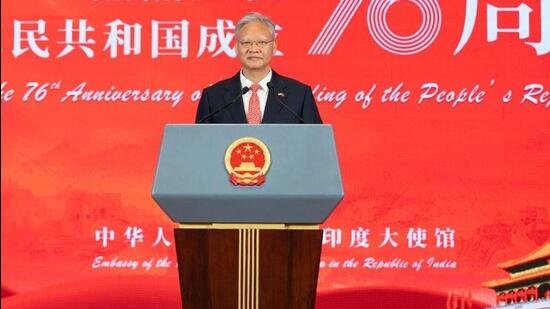 Study: Descriptions of Scientific Evidence and Uncertainty of Unproven COVID-19 Therapies in US News: Content Analysis Study. Image Credit: Gargantiopa / Shutterstock
Study: Descriptions of Scientific Evidence and Uncertainty of Unproven COVID-19 Therapies in US News: Content Analysis Study. Image Credit: Gargantiopa / Shutterstock
Despite frequent mentions of scientific evidence, U.S. media largely ignored uncertainties and relied on non-experts, fueling public confusion during the early COVID-19 crisis.
In a recent study published in the journal JMIR Infodemiology, scientists examined the portrayal of scientific evidence on early therapies against coronavirus disease 2019 (COVID-19) and the reporting of uncertainties about the efficacy of these therapies in online and traditional modes of news media in the United States to understand the misinformation and challenges associated with communicating science to the public.
Background
The COVID-19 pandemic highlighted the importance of accurate and lucid science reporting to ensure public trust and the comprehension of and adherence to public health precautions. However, the uncertainty and lack of clarity about the nature of severe acute respiratory syndrome coronavirus 2 (SARS-CoV-2) infections led to a high degree of misinformation in the early phases of the COVID-19 pandemic.
Misinformation from unverified sources, such as experts or preprints that had not been peer-reviewed, and various unapproved and scientifically unproven therapies, along with the hyper-politicization of the developments surrounding the pandemic, presented numerous challenges for accurate scientific reporting.
Furthermore, surveys have reported that traditional forms of media, such as news broadcasts, newspapers, and radio, are still the preferred news source for most Americans, compared to social media, sharing news among friends, or word of mouth. The rapid dissemination of inaccurate and unverified COVID-19 research through traditional media sources could have contributed to the people’s mistrust and frustration during the first year of the pandemic.
About the study
In the present study, the researchers examined the portrayal of scientific evidence and uncertainty about three potential and popular therapies for COVID-19 in traditional and online media sources in the U.S. The three therapies — the antiviral remdesivir, convalescent plasma, and hydroxychloroquine — were not proven to be beneficial against COVID-19 at a time when no other vaccines or therapies approved by the U.S. Food and Drug Administration (FDA) existed.
The researchers focused on the representation of these treatments in the headlines and lead paragraphs compared to reports in the main body or news reports in the video. The study’s conceptual framework used existing science communication models, such as the science literacy model, which focuses on addressing the deficits in public knowledge, and the public engagement model, which emphasizes the importance of public involvement in science policy.
The researchers acknowledged the role of factors such as omitting vital details and the potential for hype in lowering the accuracy of science reporting. Furthermore, the study considered the impact of the “primacy effect,” where readers give unequal importance to information they encounter first in the inaccurate reporting of science in headlines.
For this study, the researchers examined 479 media reports of the three treatment methods across 449 U.S. news media reports selected based on coverage and popularity. The final set of reports did not include duplicates or reports that did not substantially discuss the treatment methods.
The analysis was consistent and based on a codebook developed by the researchers to ensure uniform assessment. The study focused on the themes followed in the media reports, the portrayal of scientific evidence, the sources of authority cited, and the claims about the efficacy and safety of the treatments.
Results
The study found that 67% of the media reports discussed hydroxychloroquine, followed by remdesivir, which was discussed in 27% of the media reports, and convalescent plasma, reported in 13% of the reports.
Most of the media reports on hydroxychloroquine focused on its efficacy and safety and indicated significant involvement from political bodies, with 97% of the reports on hydroxychloroquine citing former U.S. President Donald Trump as the source of information. The media reports’ discussions on remdesivir and convalescent plasms were centered on efficacy, safety, and logistical issues.
Although 67% of the media reports referenced scientific evidence, only 24% of these reports referenced specific scientific publications. Furthermore, the limitations and uncertainty in the evidence were not frequently discussed.
Only 26% of the lead paragraphs and 6% of the headlines from these media reports contained any details on the scientific evidence. Given that most readers often do not read beyond the headlines and the lead paragraph, the lack of scientific evidence could contribute significantly to public misunderstanding and mistrust.
One of the study’s highlights was the “false balance” in media reports, where non-scientific evidence and scientific consensus were projected as equally valid. This distorted the public perception of the treatment and created confusion about its efficacy and safety.
Conclusions
Overall, the study underscored the importance of accuracy, clarity, and reliable scientific sources in science communication, especially about health and medicine. The researchers urged journalists to convey scientific evidence and limitations without sensationalism accurately. The accurate portrayal of scientific information, especially at times of uncertainty, such as the COVID-19 pandemic, is essential for informed decision-making and fostering public trust.
Journal reference:
- Watson, S., Benning, T.J., Marcon, A.R., Zhu, X., Caulfield, T., Sharp, R.R. & Master, Z. (2024) Descriptions of Scientific Evidence and Uncertainty of Unproven COVID-19 Therapies in U.S. News: Content Analysis Study. JMIR Infodemiology 4, e51328. DOI:10.2196/51328, https://infodemiology.jmir.org/2024/1/e51328






